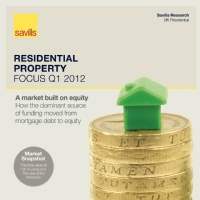While there are significant regional differences in the performance of the housing market there are also strong localised differences, within the regions. Nowhere is this more evident than in London.
The driving force behind these differences is the concentration of equity within local housing markets. At the extreme the value of housing stock in Kensington and Chelsea has risen by over 40% to £65 billion over five years, while that of Barking and Dagenham has fallen by 2% to just under £7.5 billion (see Map 3.1).
The wealth gap
The amount spent on house purchase relative to the peak of the market lays bare the relative vibrancy or dormancy of these markets.
The five boroughs with the most spent on house purchase (Kensington and Chelsea, City of Westminster, Wandsworth, Camden and Richmond) are all rich in equity. 33 pence in every pound spent on housing in London in the 12 months to the end of September 2011 was spent in these five boroughs. Here the total value of house sales stood at £12.7 billion or 77% of that seen at the peak of the market.
By contrast the five boroughs with the lowest amount spent on house purchase* (Barking and Dagenham, Newham, Waltham, Bexley and Havering) accounted for just six pence in every £1 spent. In these boroughs the amount spent on house purchase was just 43% of the level seen in at the peak of the market.
More generally, our analysis of market turnover relative to peak shows an east-west divide between the equity rich and mortgage dependent markets. It also illustrates even more clearly the higher relative spend in central London and along the wealth corridors that run north and south-west out of London, something that we have looked at in more detail in our review of the prime markets.
Looking forward
This performance measure gives a strong indication of the ability of markets to operate in the debt constrained environment of the near future. It also suggests that whatever the forecasts for price growth across the capital as a whole, there will be considerable differences at a more local level. We expect value growth in the top five boroughs to be 20.5% over the next five years, compared to 16.20% in the bottom five.
*Excluding the City of London where the built environment is dominated by commercial property.
.jpg)

.jpg)
.jpg)
.jpg)